
Cailiao Gongcheng-Journal of Materials Engineering
Scope & Guideline
Connecting Global Minds in Materials Innovation
Introduction
Aims and Scopes
- Advanced Materials Characterization:
The journal emphasizes innovative techniques for characterizing the microstructure and properties of various materials, including metals, ceramics, and composites. - Materials Processing Techniques:
Research on different processing methods, such as additive manufacturing, laser processing, and traditional methods, which are crucial for the fabrication of advanced materials. - Functional Materials Development:
Focus on the design and application of materials with specific functionalities, such as electronic, optical, thermal, and mechanical properties. - Sustainable and Eco-friendly Materials:
Exploration of materials that contribute to sustainability, including biodegradable materials, recycling processes, and environmentally friendly fabrication techniques. - Nanomaterials and Nanocomposites:
Research on the synthesis, characterization, and application of nanostructured materials and their composites, which have unique properties compared to bulk materials. - Interdisciplinary Applications:
The journal promotes research that bridges materials science with other fields, such as biomedical engineering, energy storage, and environmental engineering.
Trending and Emerging
- High-Entropy Alloys:
There is a notable increase in research focused on high-entropy alloys, which are gaining attention for their superior properties and potential applications in extreme environments. - Additive Manufacturing and 3D Printing:
A substantial rise in studies related to additive manufacturing techniques highlights the growing interest in this area, particularly for producing complex geometries and custom materials. - Smart and Functional Materials:
Emerging topics include smart materials that respond to environmental stimuli, which are increasingly relevant in applications ranging from sensors to actuators. - Biomaterials and Biomedical Applications:
Research on biomaterials, particularly for medical applications such as implants and drug delivery systems, is trending upwards, reflecting the increasing intersection of materials science and healthcare. - Sustainable Materials and Green Chemistry:
The focus on sustainability is growing, with an emphasis on developing eco-friendly materials and processes that minimize environmental impact. - Nanotechnology in Materials Engineering:
An increasing number of papers are exploring the use of nanotechnology in enhancing material properties and functionalities, indicating a strong trend towards nanomaterials research.
Declining or Waning
- Traditional Metal Alloys:
Research papers focused solely on conventional metal alloys without novel modifications or applications are becoming less frequent, possibly due to the growing interest in advanced and high-entropy alloys. - Basic Mechanical Properties Studies:
Studies that primarily discuss basic mechanical properties without innovative applications or advanced characterizations are declining, as the field moves towards more application-driven research. - Conventional Coating Technologies:
There is a noticeable reduction in publications concerning traditional coating methods, as researchers increasingly explore novel coatings with multifunctional properties. - Non-advanced Ceramics:
Research on conventional ceramics without innovative processing or application insights appears to be waning, reflecting a shift towards advanced ceramics with enhanced functionalities.
Similar Journals

Journal of Metals Materials and Minerals
Fostering Insights in the World of Materials and MineralsJournal of Metals Materials and Minerals (ISSN: 0857-6149) is a renowned academic publication dedicated to the interdisciplinary fields of metallurgical science, materials engineering, and mineralogy. Published by Chulalongkorn University, Metallurgy & Materials Science Research Institute in Thailand, this journal serves as a pivotal platform for researchers to disseminate their findings and explore innovative applications related to metals, ceramics, polymers, and biomaterials. Although the journal does not currently adopt an open-access model, it provides insightful content that facilitates knowledge sharing among professionals and academics alike. The journal has established its credibility with impressive Scopus ranking percentiles, particularly in categories such as Metals and Alloys and Ceramics and Composites. With an emphasis on advancing the understanding of materials science from 2017 to 2024, the Journal of Metals Materials and Minerals remains an essential resource for those striving to contribute to and stay informed about the latest trends and breakthroughs in these dynamic fields.

Frontiers in Materials
Driving Progress with Open Access Research.Frontiers in Materials, an esteemed journal published by FRONTIERS MEDIA SA, is a leading platform in the field of Materials Science, with a notable impact factor placing it in the Q2 category of its discipline as of 2023. Since its establishment as an Open Access journal in 2014, it has fostered considerable academic exchange, allowing researchers from around the globe to share their innovative findings and insights. Based in Lausanne, Switzerland, this journal not only emphasizes high-quality peer-reviewed articles but also prioritizes rapid dissemination of research, as evidenced by its commendable Scopus ranking of #62 out of 196 in Materials Science (miscellaneous). By consistently striving to bridge the gap between academia and practical applications, Frontiers in Materials serves as an invaluable resource for researchers, professionals, and students seeking to delve into cutting-edge advancements and transformative applications in materials science.
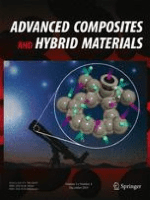
Advanced Composites and Hybrid Materials
Innovating the Future of Materials ScienceAdvanced Composites and Hybrid Materials, published by SPRINGER NATURE, is a premier journal dedicated to the field of materials science, with a keen focus on innovative composite materials and their applications. With its ISSN 2522-0128 and E-ISSN 2522-0136, the journal has established itself as a cornerstone for researchers and professionals in materials chemistry, ceramics, and polymers, achieving an impressive Q1 ranking across multiple categories in 2023. In particular, it ranks #3 out of 161 in Polymers and Plastics and #4 out of 127 in Ceramics and Composites, highlighting its influential presence within the academic community. The journal aims to provide a cutting-edge platform for the dissemination of groundbreaking research and developments from 2018 to 2024, facilitating knowledge sharing and collaboration among experts. While currently adopting a traditional access model, the significance and impact of research published in this journal cannot be overstated, making it an essential resource for anyone interested in advancing the field of composite materials.
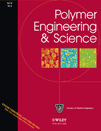
POLYMER ENGINEERING AND SCIENCE
Unveiling Innovations in Polymer EngineeringPOLYMER ENGINEERING AND SCIENCE, published by WILEY, is a premier journal specializing in the field of polymer science and engineering. Since its inception in 1961, this journal has been at the forefront of disseminating high-quality research, focusing on various aspects of polymers and plastics, including their chemistry, properties, and applications. With an impressive impact factor, it ranks in the second quartile (Q2) across multiple categories, including Chemistry (Miscellaneous), Materials Chemistry, and Polymers and Plastics, showcasing the journal's significance and influence in these vital areas of research. Researchers and professionals in academia and industry will find the latest advancements and innovative methodologies in polymer science, making this journal an essential resource for those looking to stay updated on cutting-edge developments. While it does not currently support Open Access, its comprehensive scope and critical insights positioned it as a valuable platform for advancing knowledge and fostering collaboration within the polymer community. The journal’s office is located at 111 River St, Hoboken 07030-5774, NJ, United States, emphasizing its strong presence in the academic landscape.
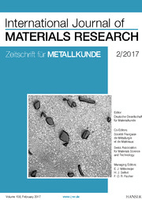
International Journal of Materials Research
Pioneering Research for a Sustainable Materials FutureInternational Journal of Materials Research is a prestigious academic platform specializing in the dissemination of cutting-edge research in the fields of materials science and condensed matter physics. Published by Walter de Gruyter GmbH, this journal serves as a vital resource for researchers, professionals, and students interested in the innovations shaping the materials landscape today. With an impact factor that reflects its growing influence, this journal offers an array of open access options, allowing for broad dissemination and accessibility of published findings. Spanning research from 1994 to 2024, the journal consistently ranks in the Q3 and Q4 quartiles across key subcategories, including materials chemistry, metals and alloys, and physical and theoretical chemistry. By bridging the gap between theoretical frameworks and practical applications, the International Journal of Materials Research provides an essential forum for advancing knowledge and fostering collaborations within the materials research community.

Materiali in Tehnologije
Exploring the Frontiers of Material TechnologiesMateriali in Tehnologije is a distinguished peer-reviewed journal dedicated to the field of materials science, focusing specifically on metals and polymers. Published by the Institute for Metals and Materials Technology in Slovenia, this open-access journal has been at the forefront of disseminating research findings and innovative technologies since 2000. With a current impact factor that reflects its increasing visibility in the academic community, Materiali in Tehnologije serves as an invaluable resource for researchers, professionals, and students alike, encompassing a wide array of studies in the categories of Metals and Alloys, as well as Polymers and Plastics. The journal is indexed in Scopus, highlighting its relevance and contribution to the field, particularly with its ranks of Q3 in Metals and Alloys and Q4 in Polymers and Plastics. As it converges towards 2024, Materiali in Tehnologije continues to be a pivotal platform for knowledge exchange, encouraging advancements in materials research and technology.
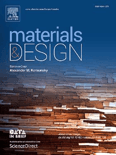
MATERIALS & DESIGN
Unleashing Potential in Materials EngineeringMATERIALS & DESIGN is an esteemed academic journal published by Elsevier Science Ltd, distinguished in the fields of Materials Science, Mechanical Engineering, and Mechanics of Materials. With a robust impact factor and ranking in the top quartiles for 2023, it stands as a leading source for cutting-edge research in these disciplines, occupying ranks of #24 in Mechanical Engineering, #19 in Mechanics of Materials, and #45 in General Materials Science according to Scopus metrics. With an open access policy established in 2019, MATERIALS & DESIGN facilitates the broad dissemination of knowledge, promoting collaboration and innovation among researchers, professionals, and students alike. The journal covers a diverse array of topics, providing vital insights into materials and design methodologies that foster advancements in technology and engineering. Operating from the Netherlands, MATERIALS & DESIGN continues to be a pivotal platform for transformative research, encouraging contributions that drive the future of material design and engineering.
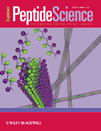
BIOPOLYMERS
Pioneering Insights in Biochemistry and BeyondBIOPOLYMERS, a distinguished journal founded in 1963 and published by WILEY, serves as an essential platform for the dissemination of research in the fields of biochemistry, biomaterials, biophysics, and organic chemistry. With an ISSN of 0006-3525 and E-ISSN 1097-0282, this journal has been pivotal in advancing our understanding of the intricate roles that biopolymers play in various biological systems and their applications in medicine and technology. The journal is recognized for its rigorous peer-review process and has established itself within the academic community, boasting impressive Scopus rankings across multiple disciplines, including a Q2 ranking in both Biophysics and Medicine for 2023. Although it does not offer Open Access options, BIOPOLYMERS provides invaluable access to critical insights and developments in the study of biopolymers, appealing to researchers, professionals, and students dedicated to innovating in this dynamic field.

JOURNAL OF MATERIALS SCIENCE
Advancing the Frontiers of Materials InnovationJOURNAL OF MATERIALS SCIENCE, published by SPRINGER, stands as a highly regarded periodical in the field of materials science, delivering impactful research since its inception in 1966. With an impressive Q1 ranking in both Mechanical Engineering and Mechanics of Materials, alongside strong Q2 positions in Ceramics, Composites, and General Materials Science, this journal serves as a pivotal resource for scholars and practitioners alike. It offers insightful contributions that span a diverse range of topics, from emerging materials to advanced applications in engineering. With a robust Scopus ranking reflecting its global influence—ranking 91 out of 672 in Mechanical Engineering and 63 out of 398 in Mechanics of Materials—the JOURNAL OF MATERIALS SCIENCE maintains an essential role in advancing the understanding and innovation within the discipline. Researchers, professionals, and students are encouraged to access this esteemed journal to keep abreast of groundbreaking findings and methodologies that shape the future of materials science.

JOURNAL OF THE MECHANICAL BEHAVIOR OF MATERIALS
Pioneering Research in Material MechanicsJOURNAL OF THE MECHANICAL BEHAVIOR OF MATERIALS, published by DE GRUYTER POLAND SP Z O O, is a prominent open-access journal in the field of materials science and mechanics, dedicated to facilitating the dissemination of high-quality research findings since 2019. With an ISSN of 0334-8938 and an E-ISSN of 2191-0243, this journal provides a platform for researchers, professionals, and students to explore the mechanical behaviors of various materials, crucial for advancing engineering and scientific applications. The journal's impact is evidenced by its impressive rankings, including Q2 status in both Materials Science (miscellaneous) and Mechanics of Materials as of 2023. With a Scopus rank placing it in the top-half of indexed journals, the JOURNAL OF THE MECHANICAL BEHAVIOR OF MATERIALS is a vital resource for anyone looking to stay at the forefront of material behavior research. Based in Germany, it serves the global academic community while catering to the evolving needs of industry practitioners through its comprehensive open-access model.